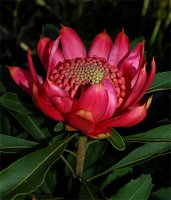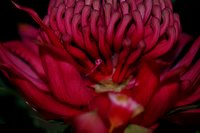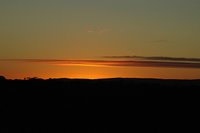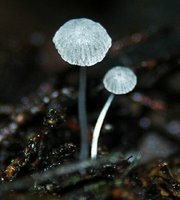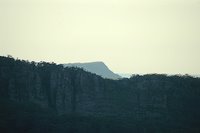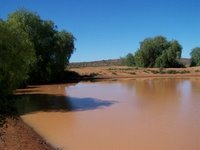
Readers will be aware of the recent trip to
"The Nine Mile" at Broken Hill, in which I accompanied
Miss Eagle on a desert spirituality retreat -
"God Outback".
This photo was taken by Miss Eagle. It shows a "tank", a typical Outback dam, with high sides, raised up above the surrounding countryside, and is filled by a pump or windmill. Tanks are important for stock, and also for birds and other animals. The trees are
"Peppercorn Trees", a very common tree in the Outback, although introduced to Australia.
On the first day out at "The Nine Mile", I pointed out to Miss Eagle that one of the local shrubs growing near this tank, was absolutely buzzing with the sounds of insects.
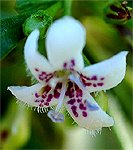
The shrub, a form of Emu Bush, or Boobialla (
Boobialla montana), was heavily in flower, with insignificant looking white flowers, with purple spots.
I should say "tiny", not insignificant - for we humans tend to view things from the human perspective only - a sure way to underestimate the true importance of things.
"Lady Bird" Beetle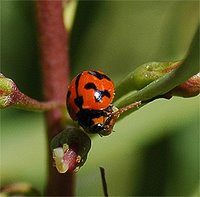
The flowers were far from insignificant to the thousands of ants, wasps, "Lady Bird" Beetles, flies and other insects which were crawling all over the bush. Also there were birds flitting in and out of this tree.
That's when Miss Eagle dubbed it the
"Tree of Life" (not original, but perfectly apt).
The whole tree was literally "humming" - you could hear the noise from metres away (
if you listened). I guess, the point is those last few words.
Note the eyes on this Fly.
As with most things in this harsh outback landscape (lets call it "desert"), one has to be "tuned in" to realise what is going on around you.
Life in the desert gets on with doing its own thing, when circumstances are right for it.
Clearly, just now, after an inch or so of Spring Rains in the district, was the right season for the Boobialla to flower, and the insects responded to that "invitation".
Ichneumonid Wasp hanging upside down
Some insects would get nectar or pollen from the flowers. In turn, they would (hopefully) pollinate the flowers. That action is necessary for the plant - that allows the plant to set seed for future generations.
Other insects, such as hover flies and ants would be there to keep the plant free of damaging sucking insects, which otherwise would weaken the plant. The
Ichneumonid Wasp (left) would be there looking for caterpillars to capture (or other insect larvae (grubs) inside hollowed out stems), in which to lay her eggs. Her long "spike" is an egg-laying device (an "ovipositor"), not a stinging device. The Lady Bird beetle (above) would be looking for aphids.
Later in the season, if the insects have done their job of pollination (and they were surely working on it when I was there) this bush will produce succulent berries. Those berries will attract Emus, and other birds, and probably small marsupials, to eat the fruit, to disperse the seeds away from the base of this plant, and to help germinate them elsewhere.
*****
A bush meditation
The whole circle of life was laid out before our eyes, in this one single shrub. It gives one plenty on which to meditate - on the interconnectedness of things, on their dependence one upon another, and on their bounty - even in an otherwise harsh desert environment.
Life keeps on giving - even in the desert. It is a great and wondrous paradox.
*****









